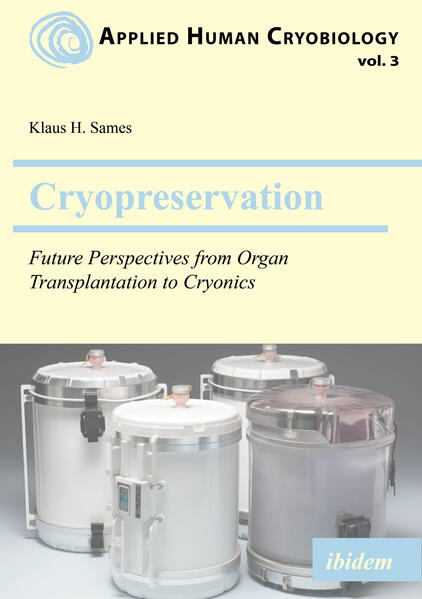
Zustellung: Di, 10.06. - Do, 12.06.
Versand in 2 Tagen
VersandkostenfreiBestellen & in Filiale abholen:
This book discusses the state of cryobiology, which is currently developing into an important and innovative field of medicine. It is already routine to preserve and revive cells and small tissue samples through cooling. The current development of organ cryopreservation with the aim of preserving human transplant organs and making them available to remedy the shortage of transplants will be discussed. Preservation of the entire human body is also a long-term goal which may come a little more into reach by such development. The processes involved in the cooling of tissues, using vitrification and cryoprotection, are discussed in detail. The many experiments on cells, tissues and organs at non-cryogenic and cryogenic temperatures below 0°C are compiled and evaluated. Obstacles to the methods and the development of means to overcome them are another topic. The astonishing survival of cells following oxygen deprivation is presented with regard to the still inadequate methods of post-mortem tissue cryopreservation. The possibilities of repairing and reactivating tissues form another chapter. The book ends with an outlook on the development of amazing new methods and procedures for cryoprotection, the prevention of ice crystals and stress fractures, and the restoration of tissues.
The work addresses a general audience as well as academics and, in particular, scientists who want to find out about the state of research in the field of cryobiology cryoprotection in general and organ and body preservation in particular.
Produktdetails
Erscheinungsdatum
03. März 2025
Sprache
englisch
Auflage
1. Auflage
Seitenanzahl
294
Altersempfehlung
ab 12 Jahre
Reihe
Applied Human Cryobiology
Autor/Autorin
Klaus Sames
Verlag/Hersteller
Produktart
kartoniert
Gewicht
383 g
Größe (L/B/H)
210/148/17 mm
ISBN
9783838220581
Entdecken Sie mehr
Pressestimmen
This book describes the still largely unknown biomedical field of cryopreservation, including future prospects for its application to the human body. Despite its scholarly nature, it remains easy to read. The difficulties of cryopreservation methods and possible solutions are dealt with extensively. A surprisingly large number of successful experiments by different groups of researchers using cells, organs and small organisms that have been cooled to different temperatures below 0°C and the observation of many frost-resistant species in the wild are presented to the reader. At the end, an outlook is given on the development of fascinating new technologies that could be helpful in overcoming the current obstacles to deep freezing and revitalization.
Paolo Brenner, MD, Professor of Cardiac Surgery, Dept of Cardiac Surgery, Clinic of Grosshadern, Ludwig Maximilian University (LMU) Munich, Germany, Board member of the International Xenotransplantation Association (IXA), specialist in xenotransplantation, assist devices and allogenic heart and lung transplantation.
Bewertungen
0 Bewertungen
Es wurden noch keine Bewertungen abgegeben. Schreiben Sie die erste Bewertung zu "Cryopreservation: Future Perspectives from Organ Transplantation to Cryonics" und helfen Sie damit anderen bei der Kaufentscheidung.









